We’ve long discussed how customer expectations for a fluid, seamless customer journey continue to increase. Users expect content, messaging, and experiences that are relevant to their interests and where they are in the buying process.
In short, users want personalized content when they interact with a brand. They want companies to understand their needs, frustrations, and desires.
According to Segment’s Personalization Report, “On average 71% of consumers express some level of frustration when their shopping experience is impersonal. 44% of consumers say that they will likely become repeat buyers after a personalized shopping experience with a particular company.”
Other studies resulted in similar findings: according to Accenture, 43% of customers are more likely to convert when brands make an effort to personalize experiences.
However, at the same time, research has found that marketers struggle to create personalized content and experiences:
- Evergage’s Personalization Survey found that only 32% of marketers believe they are currently getting personalization right.
- Siteimprove recently conducted a study that found similar results: 64% of companies say creating well targeted content is their biggest optimization challenge.
- A Forrester survey found that 40% of marketers struggle to personalize marketing programs.
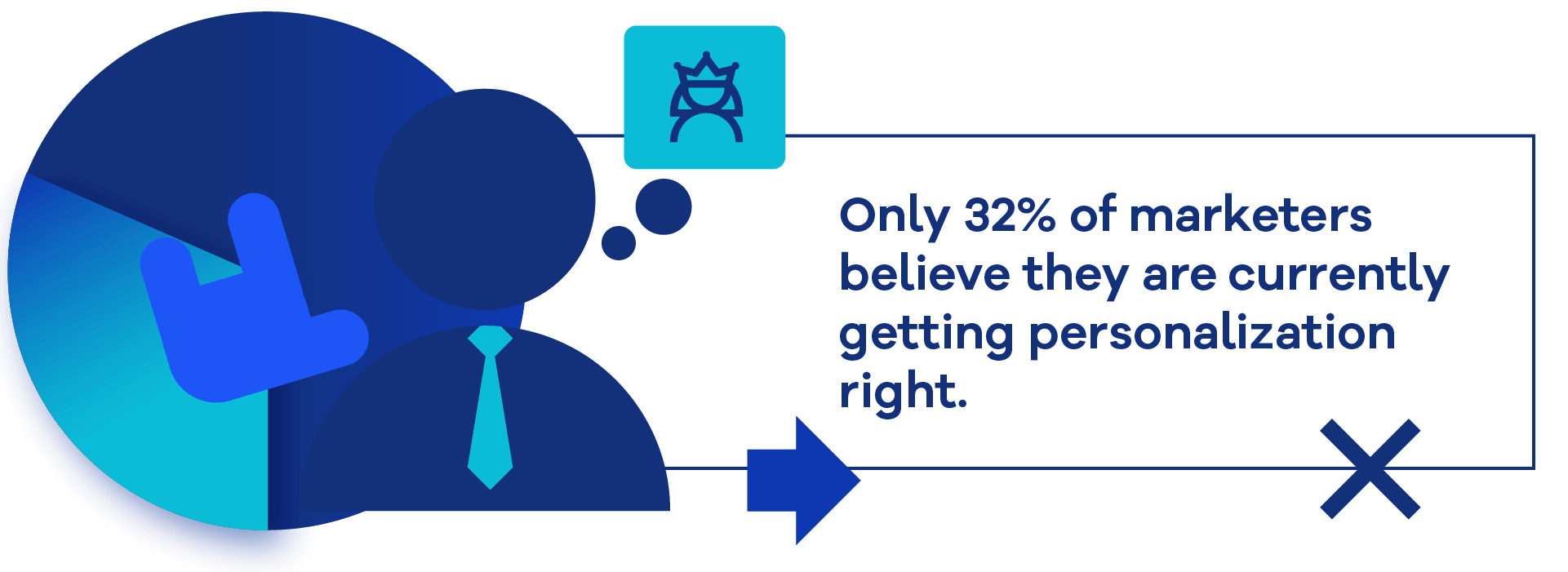
All that data to say: customers obviously want personalized content and experiences; however, marketers struggle to deliver exactly that. Below, we’ll jump into what you and your marketing team can do to create personalized content at scale.
Personalized content: What is it and does it actually matter?
Before we dive into ways to create personalized content at scale, we need to cover what that actually means and why it’s important.
What personalized content is and is not
Personalization is a “way for brands to contextualize the messages, offers, and experiences they deliver, according to each visitor’s unique profile.” Creating personalized content doesn’t necessarily mean that content needs to be specifically created and tailored to each and every individual.
This type of content starts with simply having deep insights into what customers are frustrated by, interested in, and want to solve.
“Personalization is about knowing your customers and using that knowledge to solve their problems, make their experiences smoother and better, and serve them the things they actually want and need.”
- Korina Velasco for Lytics.
The business benefits of personalizing content
The benefits of correctly executing personalized content are almost overwhelming. Customers report wanting more personalized experience: 78% of US internet users say that personally relevant content from brands increases their purchase intent.
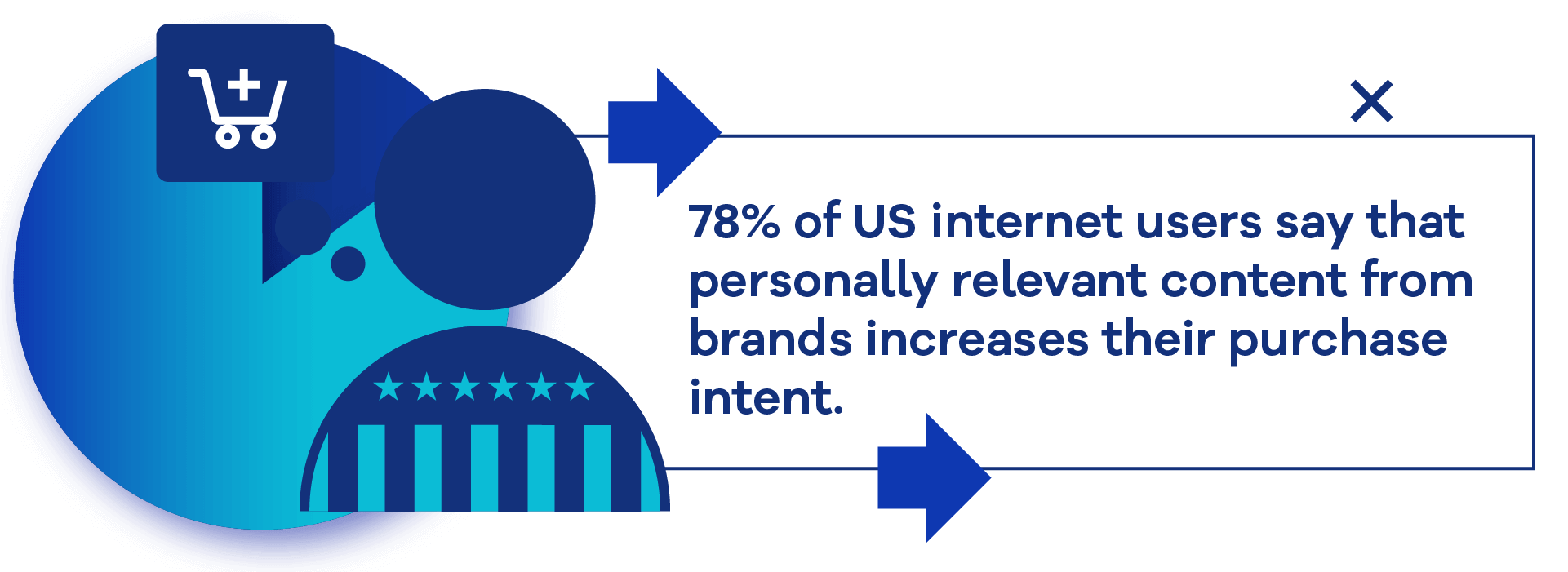
On top of what customers report, businesses also report high returns for personalized content. We know that personalization can deliver five to eight times the ROI on marketing spend and can lift sales by 10% or more. Forbes also found that marketers who exceeded their revenue goals used personalization techniques.
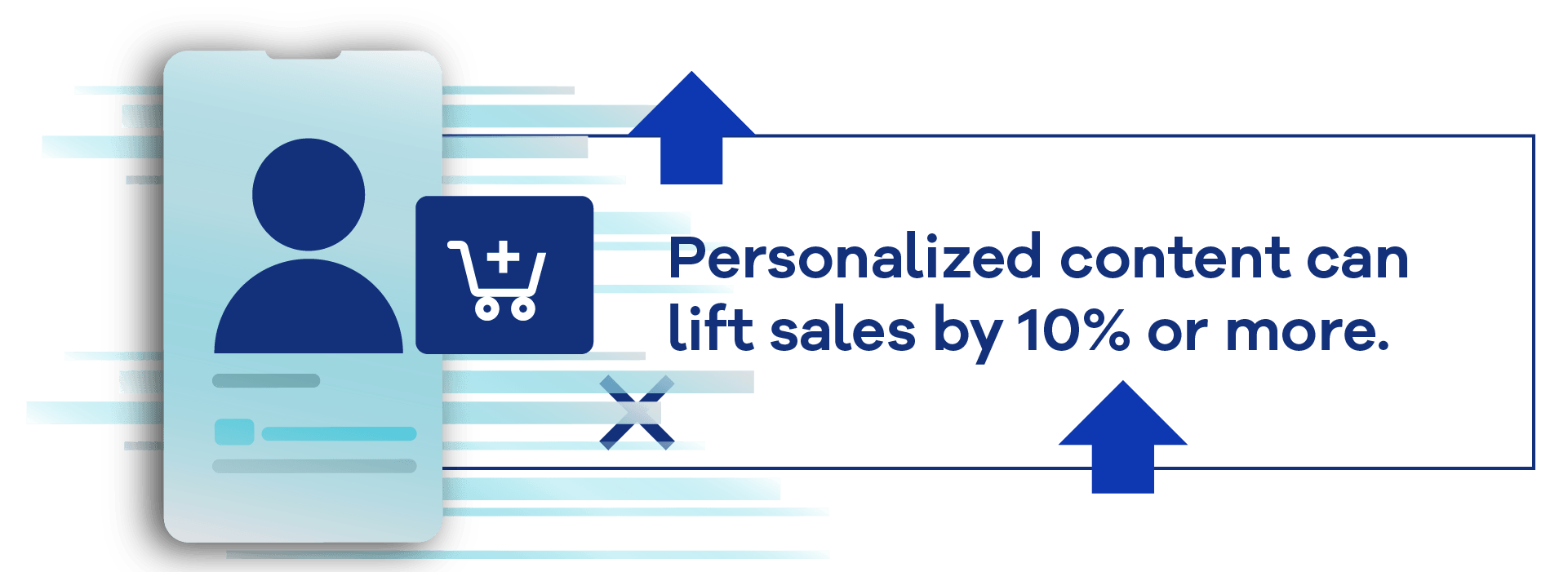
While the benefits of using well targeted content are obvious, what might be less clear are the risks of using poorly targeted content or content that’s not tailored in any way. According to a 2019 Gartner survey, brands risk losing 38% of customers because of poor personalization efforts.
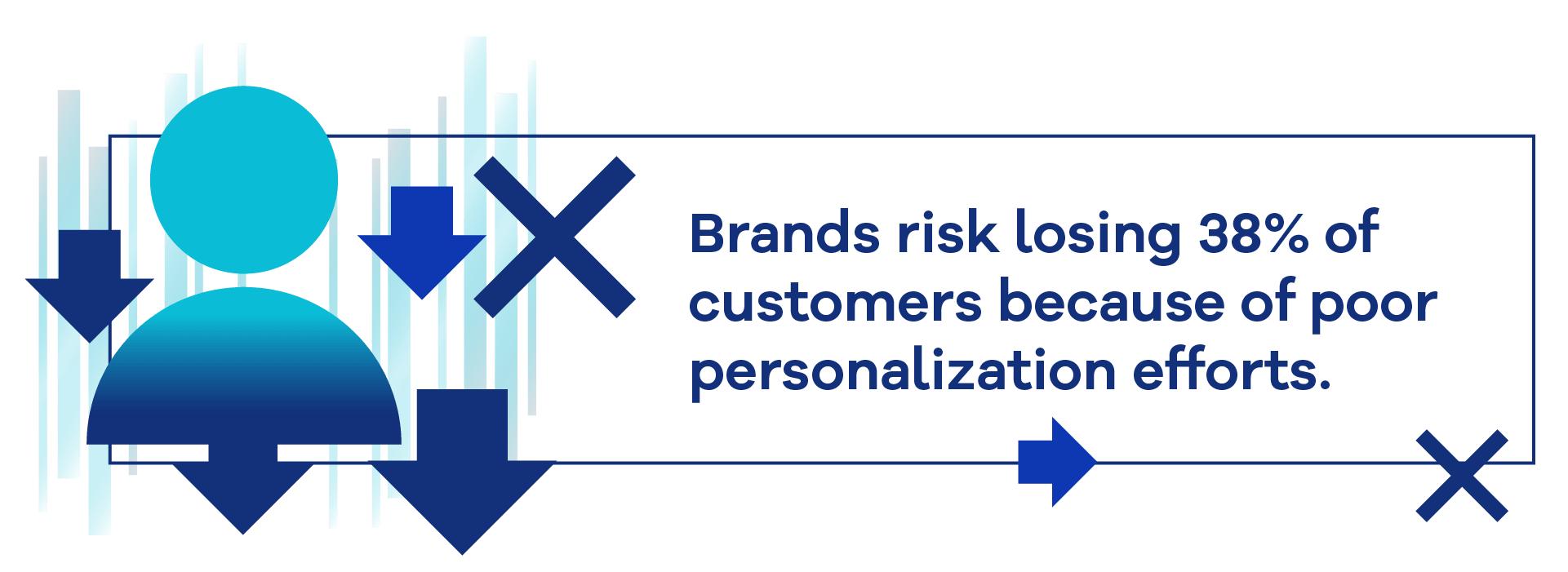
Getting personalization right: Avoiding the creepy factor
One of the most detrimental personalization strategies is going too far. As Content Marketing Institute puts it,
"There’s a fine line between ‘Hello Brian’ and ‘We’re watching you, Brian.’”
Personalization doesn’t have to mean flexing all the data you have on an individual customer—it can simply be understanding where an individual is on their journey and how you can best provide value in a relevant way.
And actually, using all the data you have on customers can have negative consequences. More than half of customers surveyed by Gartner report they will unsubscribe from a company’s communications and 38% will stop doing business with a company if they find personalization efforts to be “creepy.”

Martha Mathers, Managing Vice President at Gartner, summed up the learnings of that survey nicely by saying,
“Brands need to be extremely thoughtful in how they personalize their content today. Instead of utilizing every piece of customer data available, brands should focus on showing customers you can help them first, then layering in the right balance of data to boost message relevance, without making things too personal.”
“You don’t need to collect every piece of data imaginable. Instead, collect high-priority data and use it well,” she continued.
Data privacy best practice is only collecting data that you need to. The advice Martha Mathers outlines here is perfectly aligned with that: collect data that will enrich the customer journey. Don’t simply collect data because you can. Whenever you collect data, ensure that you use it to provide value to customers.
Leveraging data and systems you already have
We know that creating relevant, personalized content can create a smoother customer journey—one that’s packed with value. But for personalized content to actually make an impact on your business growth, it must be done at scale. To execute that, marketing teams need to rely on data and technology.
While that type of data and technology might sound complicated, it’s actually very likely that you can start creating personalization strategies right now, with data and systems you already have.
McKinsey Partner Kai Vollhardt said,
“Many marketers believe the first priority is to fully understand the quality of their data, build capabilities in analytics, or find the right tools. But most of them can start making personalization work quickly with what they already have.”
Vollhardt gave an example of a large client doing exactly that, “One of my clients tried for a long time to build the perfect data cube in an attempt to harmonize data. But when he took a step back and rethought what personalization he could accomplish with the existing data, he decided to prioritize the analysis of data on customer interactions he already had. That made it possible for us to launch initial pilots within days.”
Start with behavioral data
The most valuable type of data when creating personalized content is behavioral data. This data lets you segment your audience based on their motivations, actions, and habits. Traditionally, marketing teams have segmented based on firmographics or demographics, but that only allows you a limited degree of personalization. By collecting behavioral data, you can start to segment your audience in more meaningful ways.
If your organization is struggling to understand the behavior and interests of your best customers, try supplementing with Facebook data. Choose a segment of your customers, then create a “microsegment” that includes the most valuable subset of those customers. Then, upload that list to Facebook. From there, you can create lookalike audiences that will give you more information on the interests, behaviors, and demographic information of your high value customers and those like them.
Personalizing content at the right time
As you create more and more “microsegments,” you can start to better track their behavior and needs. As they purchase items, visit specific product pages, visit your help center, interact with customer service, or engage with your social media channels, you can build a detailed customer journey map for each segment.
If you have access to machine learning technology, then you can use that to better predict customer behavior in those microsegments. Having the ability to predict behavior also means that you can target customers or prospects with a “trigger” message.
A trigger message is targeting a specific customer segment with a piece of content, an offer, etc. that triggers them to take action. Over time, you can A/B test different triggers and see which ones perform best at each stage in the customer journey for your microsegments. In this way, you can create highly relevant and personal messaging for each customer subset.
If you don’t have access to machine learning, you can start interviewing your customers in each microsegment to understand their end goals. Then, you can work backwards from that end goal and offer up content along the way that helps them achieve that goal.
While doing customer research and testing manually might sound less appealing to technophiles, some experts believe that it’s actually more effective than machine learning models.
“Although the marketing industry has been promising personalization at scale for the past 20 years, expecting a machine to generate the perfect personalized experience is a fool’s errand. Rather, we’ve found the best way to achieve meaningful personalization is by systematically testing ideas with real customers, then rapidly iterating.”
- The Harvard Business Review.
Scaling the right content
According to Stackla, 30% of marketers said the biggest hurdle to effectively delivering personalized experiences was sourcing enough content.
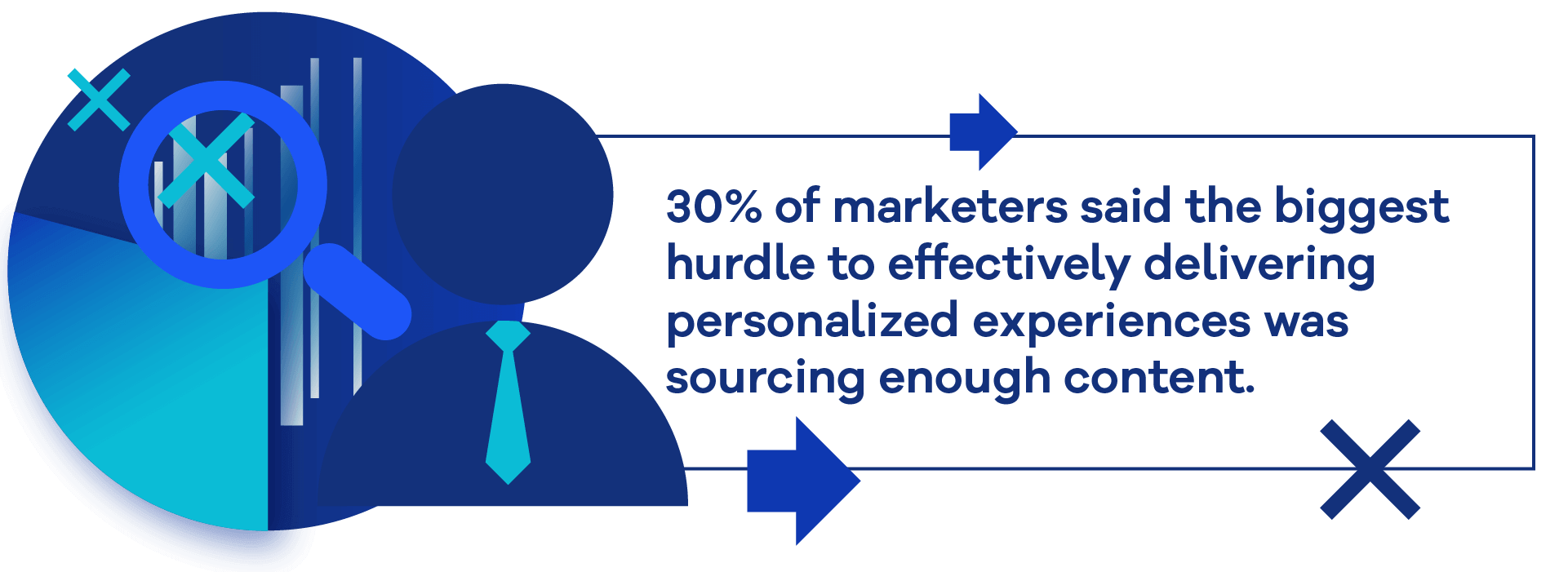
Yes, creating content that perfectly fits all of your customer microsegments is a massive undertaking, which is why it’s crucial for companies to implement scalable frameworks for personalization. There are two main ways you can scale your content program.
- The modular content method
This method scales your content program by building up. Your content team should create “modules” of content that can be used singularly or mixed and matched to build longer form content. Your content team should create modules that are independent of customer segments, so they can be quickly customized and personalized for each audience. The trick is to create content that can be versioned to meet a wide variety of consumer segments and triggers.
- The reuse, recycle, repurpose method
The reuse, recycle, and repurpose method scales your content program by breaking it down. For instance, if you’re running a customer upsell campaign, you can focus in on one “hero” piece of content—that might be a detailed customer story video about how upgrading to a more advanced product brought a number of benefits for that customer. You can break down that hero piece into content such as:
- Short videos focused on different pain points and solutions
- An interactive landing page that blends video clips with written content
- An infographic detailing the results the customer saw
- A blog post
- An eBook including quotes and stories from the customer that are mixed with outside research and commentary
When you break one large piece of content down into smaller pieces, you allow yourself more room for creating micro messaging that is relevant for specific customer segments, while still keeping your story and message cohesive across all segments.


